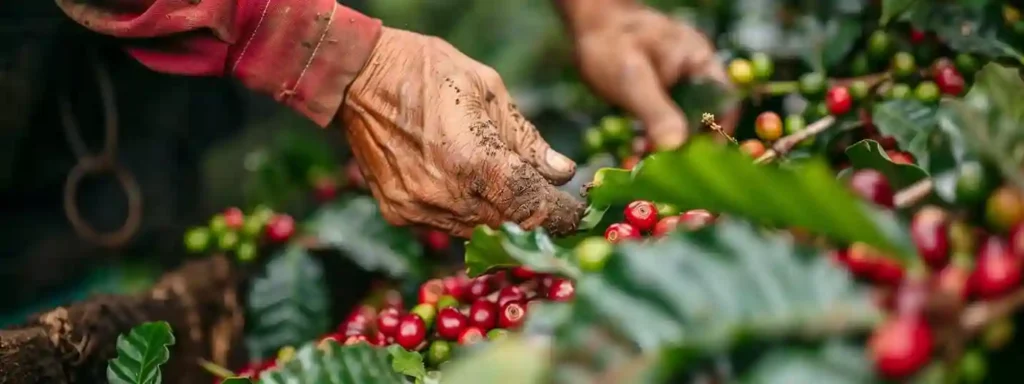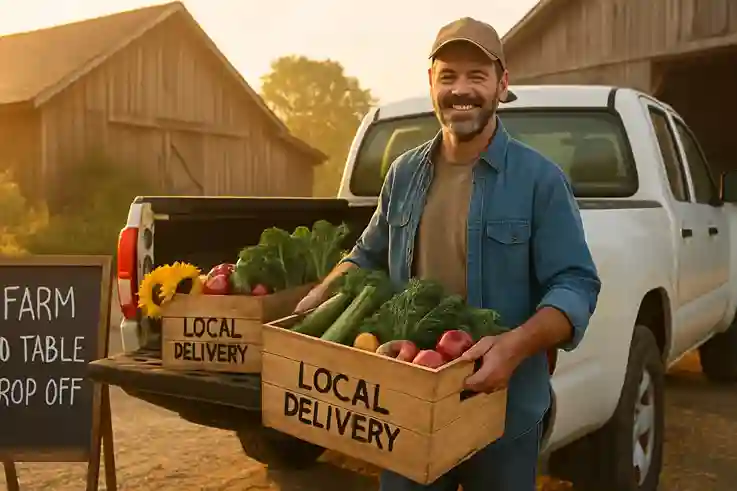Coffee Farming in America: Challenges and Opportunities
Coffee farming is gaining ground in the United States like never before. Once considered impossible outside of Hawaii, today more American farmers are exploring how to grow coffee on U.S. soil. It’s no longer just a tropical crop—it’s becoming a niche, high-value venture.
This growing interest is fueled by one key factor: demand. U.S. consumers are drinking more specialty coffee than ever. They want traceable, locally grown beans with rich flavor and a story. That shift is creating new space for small-scale, American-grown coffee to shine.
At the same time, coffee lovers and aspiring farmers alike are asking a big question: Is it really possible to grow coffee in the U.S. and make it work?
In this blog, we’ll break down the real-world picture—what’s working, what’s hard, and what’s changing. From the effects of climate change to labor costs and government support, we’ll cover the top challenges and opportunities of coffee farming in America. Whether you’re dreaming of starting your own coffee grove or just curious about where your cup comes from, this guide will give you the facts and the future outlook.
Where Coffee Farming Happens in the U.S.
When people think of coffee farming, the U.S. probably isn’t the first place that comes to mind. But a few regions across the country have the right conditions to grow coffee—and they’re putting American beans on the map.
The most established region is Hawaii, especially the Big Island’s Kona district. Its volcanic soil, tropical rainfall, and consistent temperatures make it ideal for coffee. Hawaiian coffee has been grown commercially since the 1800s and remains one of the few American-grown coffees widely available.
Another rising region is California. In southern areas like San Diego and Santa Barbara counties, coffee is being grown in avocado groves and experimental orchards. Though it’s still a young industry there, California’s Mediterranean climate and innovation in irrigation have shown promise—especially for small boutique farms focused on high-end beans.
Puerto Rico is also an important part of U.S. coffee farming history. The island has produced coffee for centuries, particularly in the central mountains. While production dropped after hurricanes and economic shifts, there’s a strong push to revive and modernize the industry today.
What do these places have in common? Mild winters, steady rain, and rich soil. Coffee thrives in warm climates without frost, ideally at higher elevations. That’s why only a few states can realistically support large-scale coffee farming. Harsh winters or unpredictable rainfall make it nearly impossible elsewhere.
Still, these regions prove that coffee farming in the U.S. isn’t just possible—it’s growing. And as climate patterns shift and demand rises, we may see even more American farms experimenting with the crop.
Why Starting a Coffee Farm Isn’t Cheap
Coffee farming in the U.S. comes with a steep price tag. One of the biggest hurdles new growers face is the high cost of land and labor. Unlike coffee-producing countries with lower wage standards and cheaper farmland, American farms must operate under strict labor laws and rising real estate prices—especially in regions like California and Hawaii.
These costs eat into profits quickly. Most U.S. coffee farms are small, family-run operations, and that means thin margins. Add in the long growth cycle—coffee trees can take 3 to 5 years to produce usable beans—and you’ve got a business that requires patience and deep investment up front.
Then there’s global competition. Coffee from Brazil, Vietnam, and Colombia floods the market at a fraction of the cost. These countries have decades of infrastructure, cheap labor, and massive scale—making it tough for American-grown beans to compete on price alone.
On top of that, there are specialty costs to consider. Equipment for pulping, fermenting, drying, and roasting isn’t cheap. Many small farmers outsource these steps to local co-ops, but even that comes at a price. And if you’re selling specialty coffee, certification programs like organic, Rainforest Alliance, or fair trade can add thousands of dollars in annual fees and audits.
So how do U.S. farmers make it work?
Niche marketing and direct-to-consumer sales are the key. Rather than competing on price, many growers focus on quality, storytelling, and transparency. Small-batch, single-origin beans with local branding can sell for a premium—especially when paired with online subscriptions or farm tours. It’s not a fast path to profit, but it’s a sustainable one for farmers who play the long game.
Coffee Farming and Climate Change: A Risky Forecast
Climate change is one of the biggest threats to coffee farming today. Rising temperatures, shifting rainfall patterns, and extreme weather events are making it harder to grow healthy coffee plants—especially in traditional regions.
Coffee is a sensitive crop. It prefers stable temperatures, light shade, and moderate rainfall. But as the planet warms, farmers are seeing more heatwaves, droughts, and unexpected storms—all of which stress the plants and reduce yields. In places like Hawaii and Puerto Rico, even a slight temperature increase can affect flowering and bean quality.
Shifting growing zones are also creating both challenges and new opportunities. As lower altitudes become too hot for reliable production, some farmers are moving to higher elevations where the climate is cooler. This trend is happening around the world—and in some parts of the U.S., it opens up the possibility for new coffee farming areas. But adapting to new terrain requires investment and planning, and not every grower can make the leap.
Another major concern is the rising threat of diseases and pests, especially coffee leaf rust (Hemileia vastatrix). This fungal disease thrives in warmer, wetter conditions and has devastated farms across Central and South America. As the climate shifts, the U.S. may see higher risks of similar outbreaks—especially in humid regions like Puerto Rico.
For American growers, building climate resilience into farming practices is essential. That might mean experimenting with hardier coffee varieties, investing in shade cover, or shifting planting calendars. Climate-smart coffee farming isn’t just good for sustainability—it’s becoming necessary for survival.
Labor and Policy Challenges in U.S.
Labor is one of the toughest challenges in American coffee farming. Unlike many coffee-producing countries that rely on inexpensive labor, farms in the U.S. must follow federal and state wage laws, including minimum wage, overtime, and seasonal worker protections.
Picking coffee cherries is incredibly labor-intensive. It’s done by hand, often over several weeks, to ensure only the ripe cherries are harvested. In places like Hawaii and California, farm owners struggle to find enough seasonal workers—and when they do, the cost is high. Some farmers offer housing and transportation just to stay competitive, adding more pressure to already slim profit margins.
Government policies also shape how coffee farming operates in the U.S. Unlike crops like corn or soy, coffee doesn’t benefit from large-scale subsidies or well-established support programs. That leaves many growers navigating grants, loans, and USDA programs on their own—especially when trying to invest in equipment or recover from climate-related damage.
There are also import/export complications. For example, farmers in Puerto Rico face unique regulatory hurdles when selling to the mainland U.S., despite being part of the same country. On top of that, certifications like organic or fair-trade require paperwork, fees, and inspections—not always easy for a small family-run farm.
Despite these hurdles, some policy changes are beginning to support domestic coffee. Pilot programs in Hawaii and California are exploring agricultural education, tax credits, and local marketing support. But for now, most U.S. coffee farmers must rely on creativity, resilience, and direct consumer engagement to stay in business.
Is Coffee Farming in the U.S. Sustainable?
Coffee farming in America is still young—but it’s showing promise. While it faces big challenges, there are also growing signs that small-scale, sustainable coffee farming can thrive with the right strategy.
Environmental Sustainability: Small Footprints, Smart Practices
Most U.S. coffee farms are small and carefully managed. This makes it easier to adopt sustainable practices like shade-grown cultivation, organic fertilizers, and water-efficient irrigation. Farms in California and Hawaii are already experimenting with permaculture and regenerative agriculture to keep the soil healthy and reduce waste.
Because coffee is a perennial crop (it grows year after year), farmers can build long-term soil health and reduce land disturbance. By using compost, mulching, and natural pest control, U.S. growers are creating models for low-impact farming that protect both land and product quality.
Economic Sustainability: Sell Smart, Not Big
In the U.S., coffee farming rarely works at industrial scale. But it doesn’t have to. Many farmers are succeeding by going niche—focusing on direct-to-consumer models like farm tours, online sales, and coffee subscriptions. Selling roasted beans instead of raw green beans allows them to keep more of the profit.
With consumers willing to pay more for local, transparent, and high-quality coffee, small farms can compete by building strong personal brands. Partnering with local roasters and cafés also helps growers keep distribution costs down while reaching loyal buyers.
Social Sustainability: Building Local Connections
Coffee farms in the U.S. often support rural communities. In Hawaii, for example, coffee is one of the few profitable crops still supporting small landholders. In California, coffee is helping some farmers diversify away from water-heavy crops like almonds.
By paying fair wages and involving local communities, U.S. coffee growers are laying the groundwork for ethical, people-focused agriculture. Many are also committed to worker safety and creating educational pathways for the next generation of farmers.
The Big Picture
So, is coffee farming sustainable in the U.S.? It depends. Large-scale profits are hard to come by, but with a focus on quality, transparency, and innovation, coffee can be a smart, future-forward crop for passionate growers.
Frequently Asked Questions About Coffee Farming in the U.S.
1. Can you grow coffee in the United States?
Yes, but only in certain regions. Coffee farming in the U.S. is mostly found in Hawaii, parts of California, and Puerto Rico—areas with the tropical or subtropical climate coffee needs.
2. Is coffee farming profitable in the U.S.?
It can be, but it’s tough. Due to high land and labor costs, U.S. coffee farmers often focus on specialty markets and direct-to-consumer sales to stay profitable.
3. What makes U.S. coffee farming different from other countries?
Unlike many global producers, U.S. coffee farming must follow strict labor laws and doesn’t benefit from large-scale subsidies. However, it offers traceability, quality, and sustainability.
4. How is climate change affecting coffee farming?
Warming temperatures, unpredictable rainfall, and new pests are major threats. Some growers are shifting to higher elevations or adapting with climate-smart practices.
5. What type of coffee is grown in the U.S.?
Most U.S. farms grow Arabica coffee, prized for its flavor. Varieties vary by region, and farmers often experiment with small lots to develop unique tasting profiles.
Final Thoughts
Coffee farming in the U.S. is more than a trend—it’s a movement. While the challenges are real, so is the opportunity to grow high-quality coffee with care, transparency, and purpose. From the volcanic soils of Hawaii to experimental farms in California, American growers are proving that local coffee can be sustainable, ethical, and profitable—when done right.
Whether you’re an aspiring farmer or simply a curious coffee lover, understanding the story behind your cup adds value to every sip. By supporting small-scale coffee farming in America, you’re helping build a future where agriculture works better for people, the planet, and your morning brew.
Which part of U.S. coffee farming surprised you most?
Drop your thoughts in the comments—and don’t forget to subscribe to our newsletter for more expert insights on sustainable farming

Michael Reyes is a versatile blogger with a primary focus on farming and sustainable living. Growing up close to nature, he developed a deep interest in agriculture and enjoys sharing practical tips on backyard farming, modern cultivation techniques, and eco-friendly practices. While farming remains his specialty, Michael also writes on a wide range of topics, from lifestyle and travel to everyday inspiration, making his work relatable to a broad audience.
Outside of writing, Michael enjoys spending time outdoors, experimenting with new farming methods, and exploring different cultures through food and travel. His approachable voice and well-researched insights make his blogs both informative and engaging.


